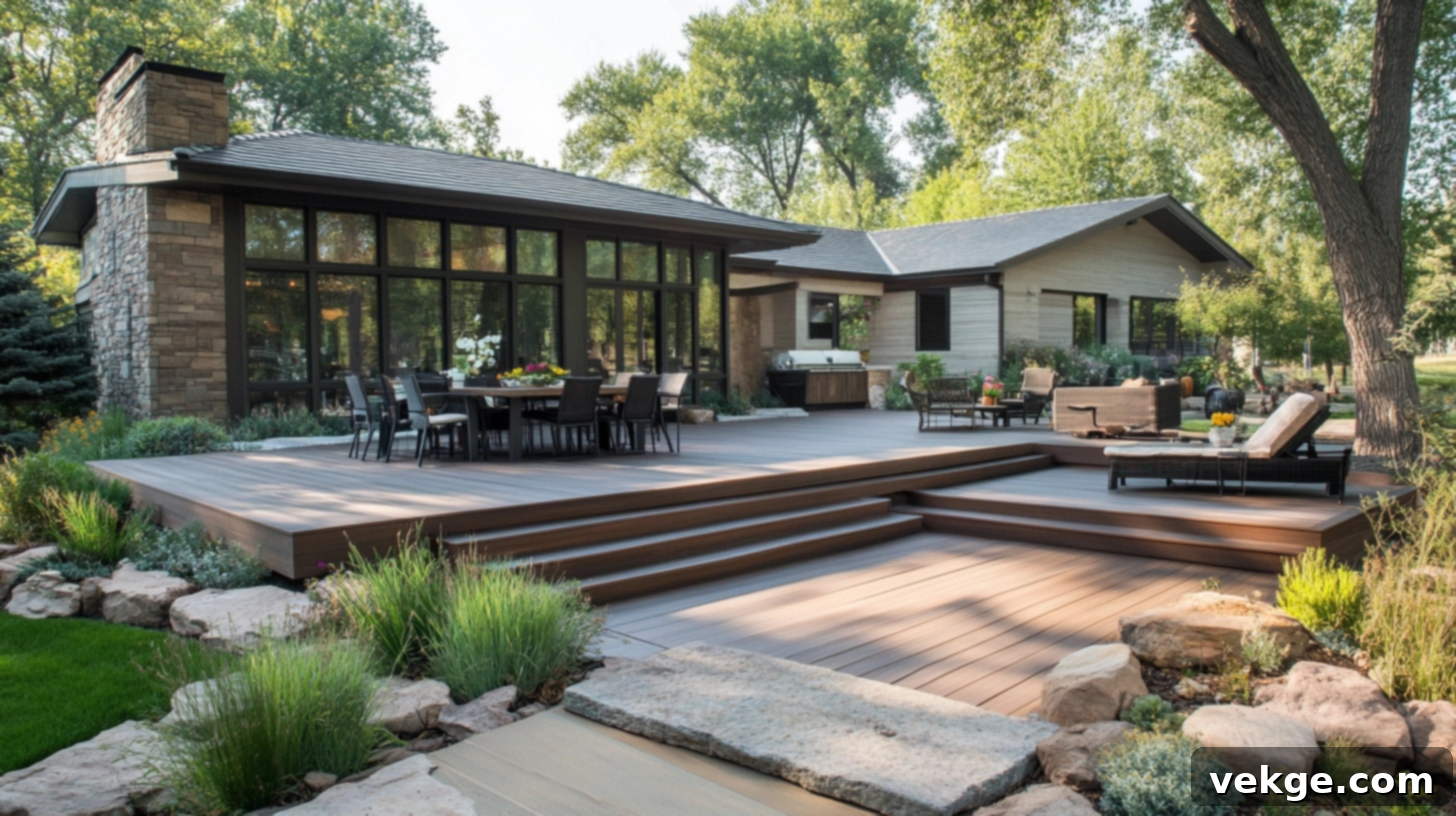Elevate Your Outdoor Living: The Ultimate Guide to Designing and Building a Deck and Patio Combo
Transforming your backyard into a truly functional and beautiful extension of your home is easier than you think. By combining a deck with a patio, you create a versatile outdoor living space that maximizes the use of your property, allowing for a seamless transition between indoor and outdoor areas. This smart, multi-level approach offers distinct zones for various activities, adding significant visual interest and practical functionality to your yard. Whether you envision lively entertainment spaces or serene relaxation spots, a deck and patio combo provides the perfect canvas.
In this comprehensive guide, we’ll walk you through everything you need to know about creating a functional and stylish deck and patio combination. From initial planning and intelligent material selection to the step-by-step construction process and essential ongoing maintenance, we cover it all. Whether you have a small urban backyard or a sprawling suburban property, these design ideas and practical tips will empower you to create an outdoor sanctuary that perfectly suits your lifestyle and enhances your home’s value. By the end, you’ll have all the knowledge and inspiration to upgrade your outdoor area into a truly useful, beautiful, and enduring extension of your living space.
What is a Deck and Patio Combo and Why Does It Matter?
A deck and patio combo intelligently unites two popular outdoor structures: an elevated deck and a ground-level patio. This strategic combination offers a dynamic and incredibly versatile space that can effortlessly serve multiple functions. By integrating both elements, you maximize your outdoor living area, providing ample room for both serene relaxation and vibrant entertainment. This dual-level approach naturally creates distinct zones for different activities, all within a cohesive design, without the need for constructing separate, isolated structures elsewhere in your yard. It’s a holistic solution for comprehensive outdoor enjoyment.
The Benefits of Combining a Deck and Patio
Creating a deck and patio combo allows you to design a more dynamic and inviting outdoor space that harmoniously blends the best of both worlds. Imagine an elevated deck perfect for al fresco dining, sunbathing, or enjoying panoramic views, seamlessly connected to a lower patio ideal for comfortable lounging, a cozy fire pit, or an outdoor kitchen. This thoughtful combination empowers you to:
- **Utilize Uneven Terrain Effectively:** Decks are perfect for addressing sloped or uneven yards, allowing you to build on higher ground and create level usable space where a traditional patio might be challenging. A patio can then be integrated at the natural ground level below, balancing the landscape.
- **Create Captivating Visual Interest:** The multi-level design inherently adds depth, dimension, and architectural appeal to your outdoor space, transforming a flat yard into a visually engaging landscape. The contrasting textures and heights create a rich aesthetic.
- **Naturally Separate Functional Areas:** Easily define distinct zones for different activities without physical barriers. For instance, the deck can be dedicated to dining and grilling, while the patio serves as a relaxed lounging area or a children’s play zone. This separation provides a sense of order and purpose to each space.
- **Offer Options for Varying Conditions:** Enjoy flexibility regardless of the weather or time of day. The elevated deck might catch more sun for daytime enjoyment, while the shaded patio provides a cool retreat in the afternoon. Or, one area can be designed for morning coffee, the other for evening gatherings.
- **Maximize Property Value and Appeal:** Combining a well-designed deck and patio is a highly sought-after feature for homeowners, significantly boosting your property’s market value and curb appeal. It demonstrates thoughtful design and extended living space.
- **Enhance Indoor-Outdoor Flow:** With direct access from your home to the deck, and a smooth transition to the patio, the entire outdoor area feels like a natural extension of your indoor living space, making it easy to move between environments.
Key Elements to Consider for Your Deck and Patio Combo Design
Designing a deck and patio combo is more than just building two separate structures; it requires careful planning to ensure both spaces work together effectively, meet your specific needs, and complement your home’s architectural style. The right design strikes a delicate balance between materials, layout, and functionality to create an outdoor area that not only enhances your quality of life but also significantly improves your home’s overall value and aesthetic appeal.
Space Layout and Seamless Flow
The essence of a successful deck and patio combo lies in its seamless transition. Your goal should be to create an inviting flow that encourages effortless movement between both spaces. Consider incorporating wide, gentle steps, consistent color themes, or matching railing styles to visually and physically connect the areas. The height difference between levels should feel natural and manageable, never abrupt or hazardous. Additionally, ensure there is ample space on each level to comfortably accommodate your planned activities, whether it’s a dining table, a full lounge set, or a dedicated grilling station. Think about sightlines from inside your home and how the combo will look from various points in your yard. Consider privacy needs and sun exposure for each zone.
Material Selection: Choosing the Right Combo
The choice of materials is crucial for both aesthetics and durability. Select materials that not only complement each other but also enhance the overall appearance and longevity of your outdoor space. A popular and effective approach is to use wood for the elevated deck and a contrasting material like stone, concrete pavers, or natural flagstone for the patio. This contrast creates dynamic visual interest, allowing each space to maintain its unique character while contributing to a unified design. When making your selection, consider:
- **Decking Materials:** Options range from natural woods like cedar, redwood, and pressure-treated pine (offering classic warmth and appeal, but requiring regular maintenance) to composite or PVC decking (providing exceptional durability, low maintenance, and a wide array of colors and textures).
- **Patio Materials:** Choices include poured concrete (versatile, cost-effective, can be stamped or stained), various types of pavers (interlocking for durability, many colors/shapes), natural stone like bluestone, travertine, or flagstone (premium look, unique patterns), or even brick (timeless, classic appeal).
- **Complementary Elements:** Don’t forget materials for railings (wood, metal, glass), steps, and edging. These should harmonize with your primary deck and patio materials and your home’s exterior. Consider colors and textures that work with your home’s exterior palette and the surrounding natural landscape.
Defining Functional Zones
One of the greatest advantages of a deck and patio combo is the ability to clearly divide your outdoor space into distinct functional zones for dining, relaxing, entertaining, or even a dedicated play area. Utilize furniture arrangements, thoughtful lighting designs, or strategic planting of various shrubs and trees as visual dividers. For instance, the elevated deck often serves beautifully as a primary dining area, perhaps with an elegant outdoor table and chairs, or even an outdoor kitchen. The lower patio, being closer to the ground, is ideal for a comfortable lounge area with plush sofas, a mesmerizing fire pit for evening gatherings, or a tranquil water feature. This intentional zoning helps to maximize the utility and enjoyment of your outdoor space, ensuring every square foot serves a purpose.
Inspiring Design Ideas for Modern Deck and Patio Combinations
Modern deck and patio combinations offer an exciting array of design possibilities to suit virtually any style, preference, and functional need. These multi-level outdoor spaces are not just additions; they are transformative elements that can elevate your backyard into a truly functional, beautiful, and inviting extension of your home, creating distinct zones for relaxation, entertainment, and everyday enjoyment. Let these ideas ignite your imagination:
1. Minimalist Chic with Clean Lines
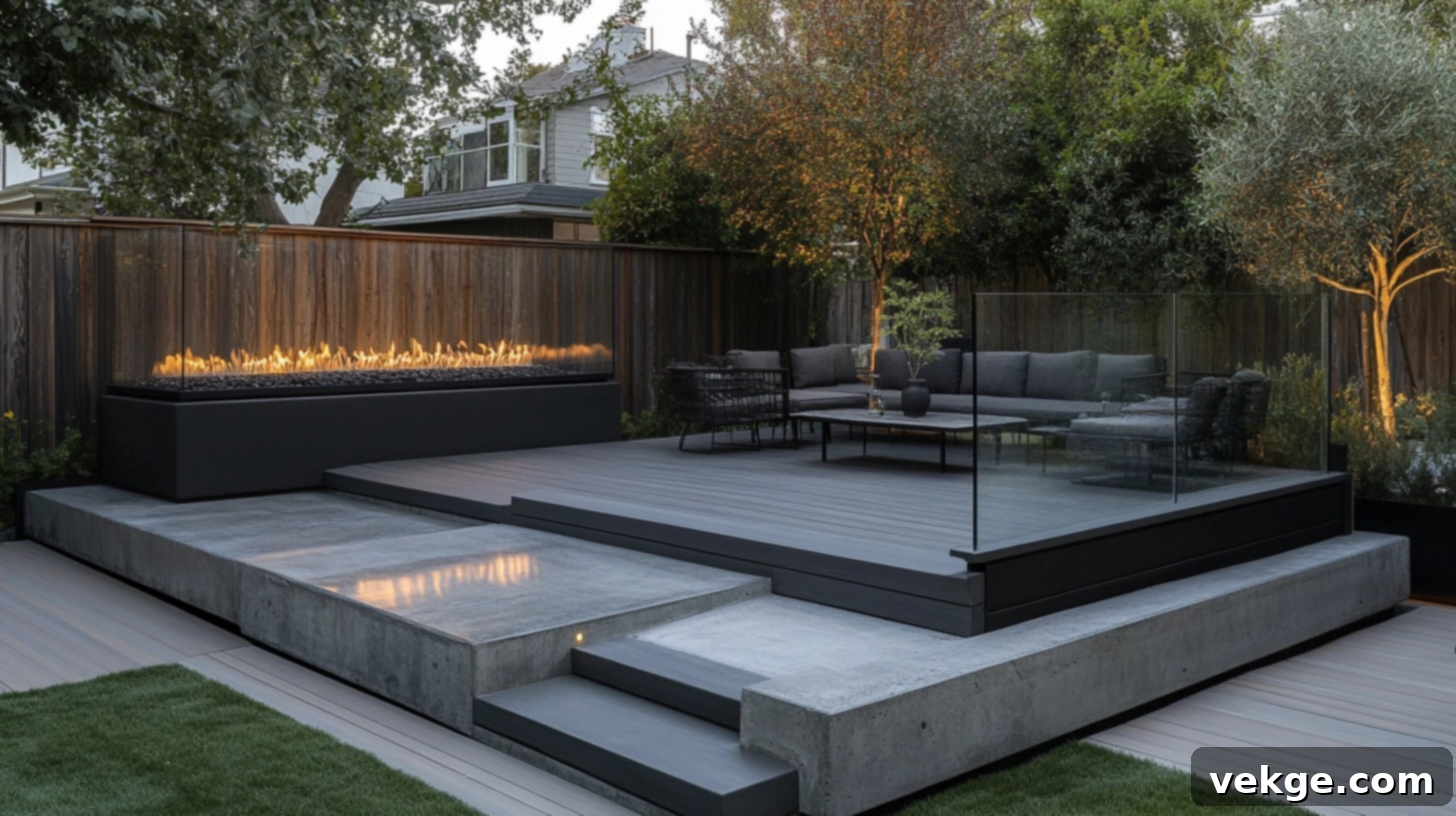
Embrace simplicity and elegance with an open, uncluttered layout, neutral tones, and sleek materials such as smooth concrete for the patio and perhaps a durable composite or finely milled wood for the deck. The integration of glass railings can further enhance the clean, expansive feel. This design philosophy emphasizes functionality through uncluttered surfaces, precise geometric patterns, and a subtle, sophisticated color palette, culminating in a calm, modern, and highly sophisticated outdoor retreat that exudes contemporary charm.
2. Rustic Wood and Stone Combo

For a warm, inviting, and timeless aesthetic, combine the natural warmth and texture of a wooden deck with a robust stone patio. This classic pairing adds rich texture and authentic character to your outdoor space, creating a welcoming, earth-inspired atmosphere that beautifully complements natural surroundings and gracefully withstands the elements. Consider reclaimed wood for the deck and large flagstones or natural river rock for the patio to enhance the rustic appeal.
3. Contemporary Concrete and Steel
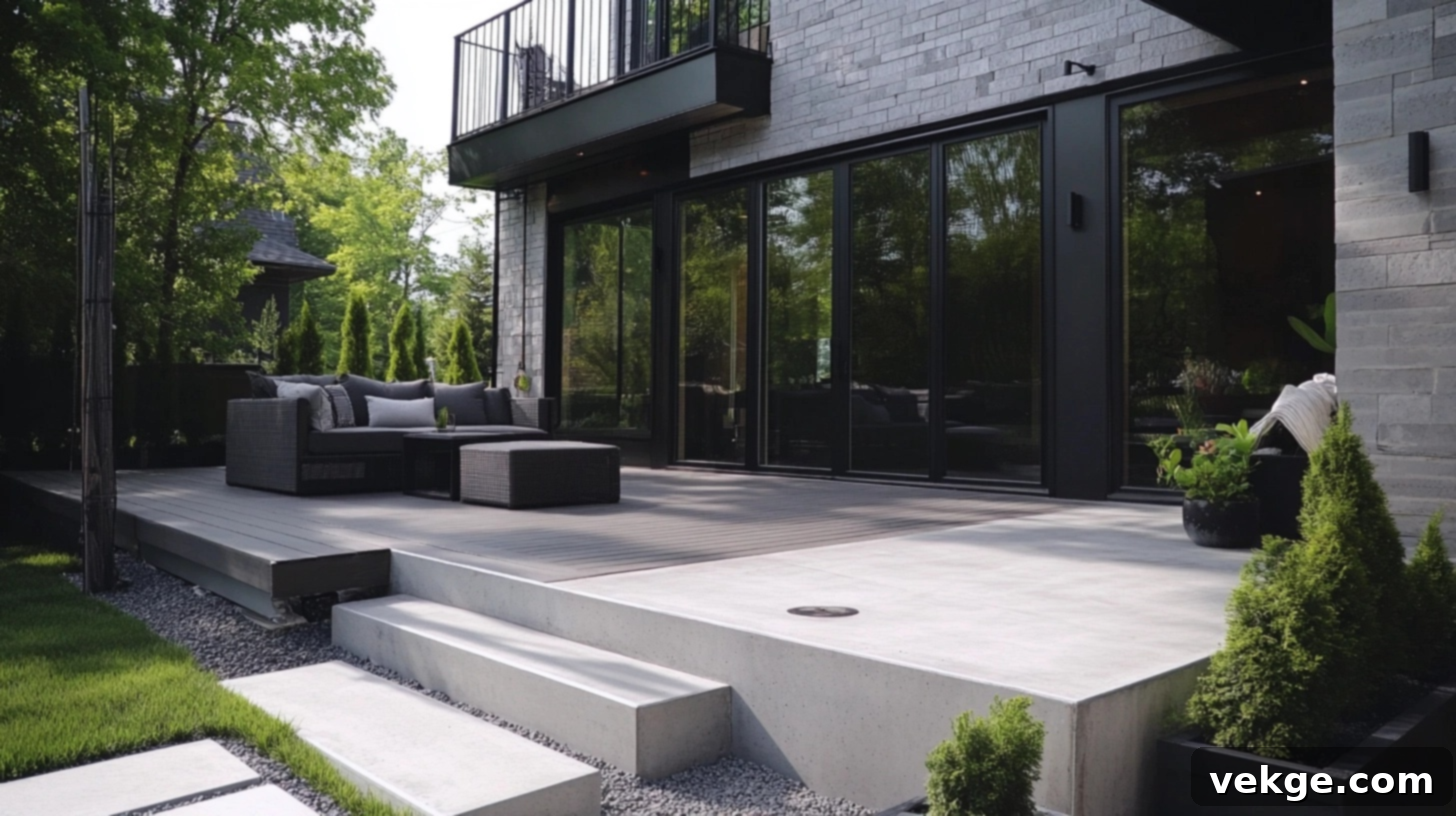
Forge a bold, industrial-style outdoor combo by utilizing the strength and versatility of concrete for your patio, complemented by a deck framed and perhaps topped with steel or industrial-grade composite materials. This low-maintenance pairing is characterized by incredibly clean lines, exceptional durability, and a striking, modern aesthetic. It’s an ideal choice for those seeking a unique outdoor space that makes a strong design statement and requires minimal upkeep, perfect for urban or contemporary homes.
4. Coastal Vibes with Natural Materials
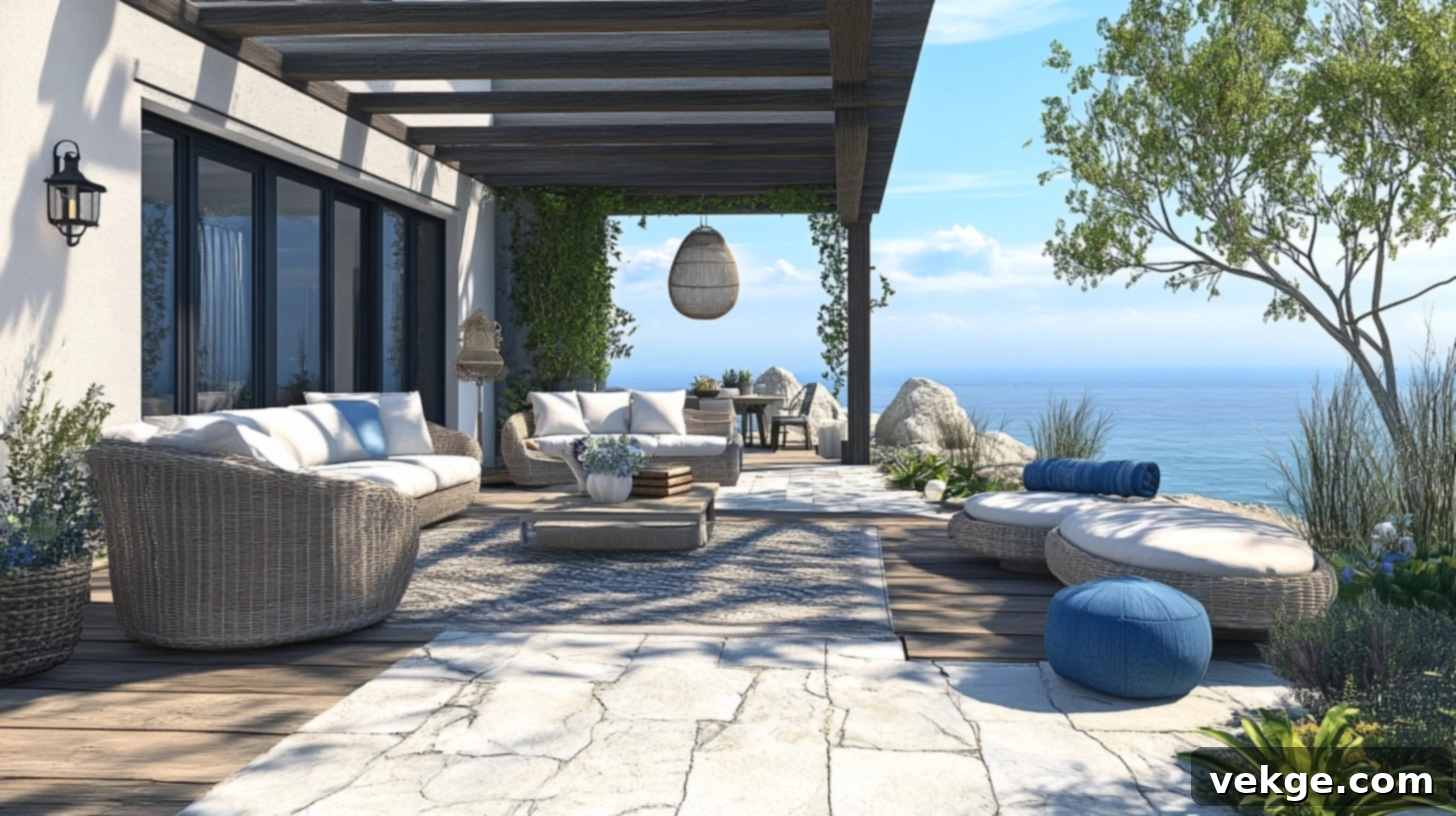
Evoke the relaxing ambiance of a seaside escape by selecting a weathered or light-colored wooden deck paired with a sandy-toned stone or concrete paver patio. Enhance this beach-inspired aesthetic with charming wicker furniture, soft linen textiles, and subtle nautical accents. This breezy design effortlessly brings the charm and tranquility of the coast to your backyard, utilizing natural fibers, weathered woods, and a refreshing color palette of ocean blues, sandy neutrals, and crisp whites for a truly serene retreat.
5. Bohemian Inspired with Colorful Textures
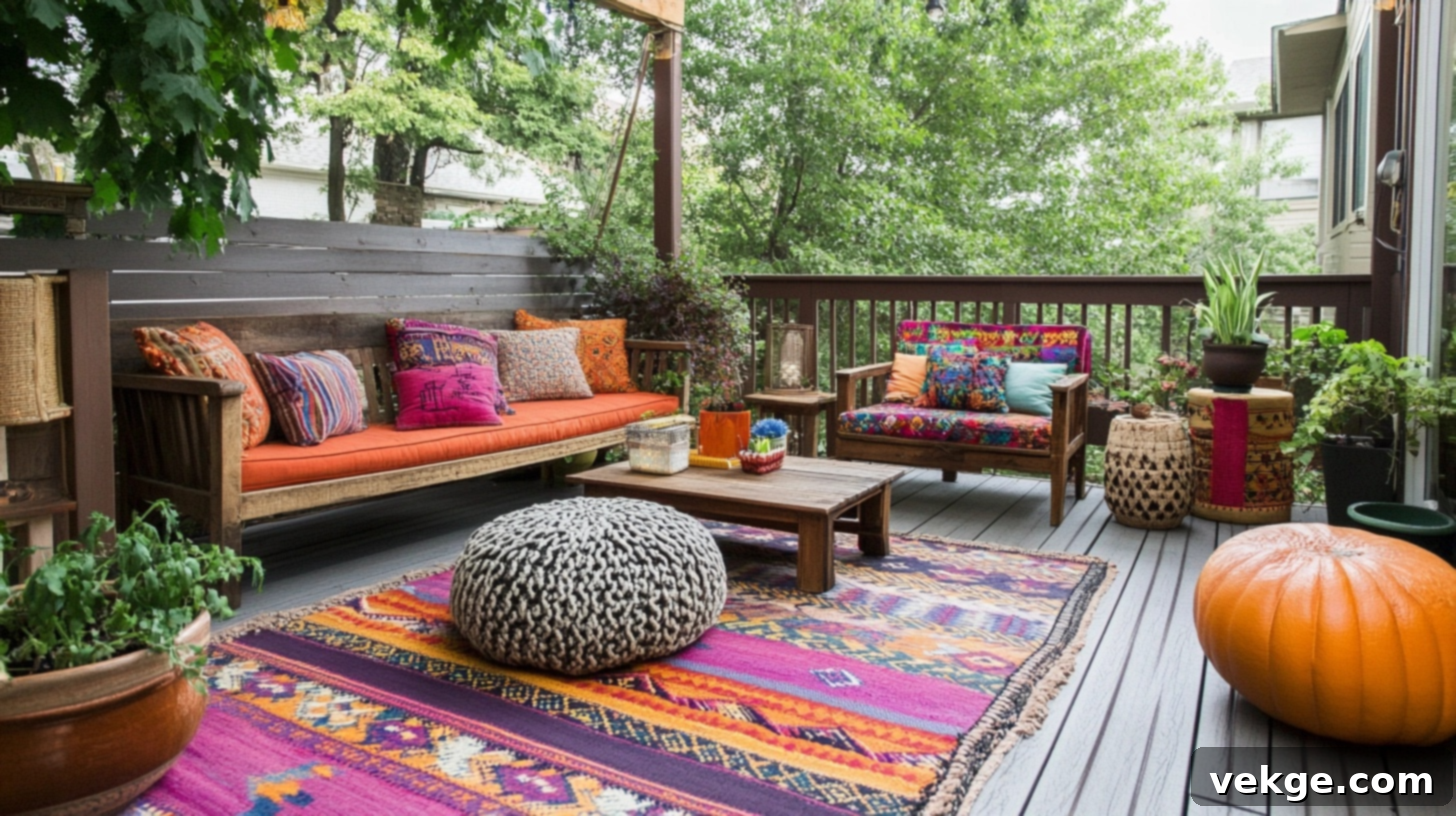
Unleash your creative spirit with a vibrant, bohemian-inspired outdoor space. Blend an array of colorful cushions, intricately patterned rugs, and eclectic, globally-inspired furniture with a warm wooden deck and a rustic stone patio. This free-spirited design strategy embraces a rich tapestry of colors, diverse patterns, and unique textures to create a truly personalized and inviting outdoor area that authentically reflects your personality, wanderlust, and love for artisanal flair.
6. Glamorous Glass and Wood
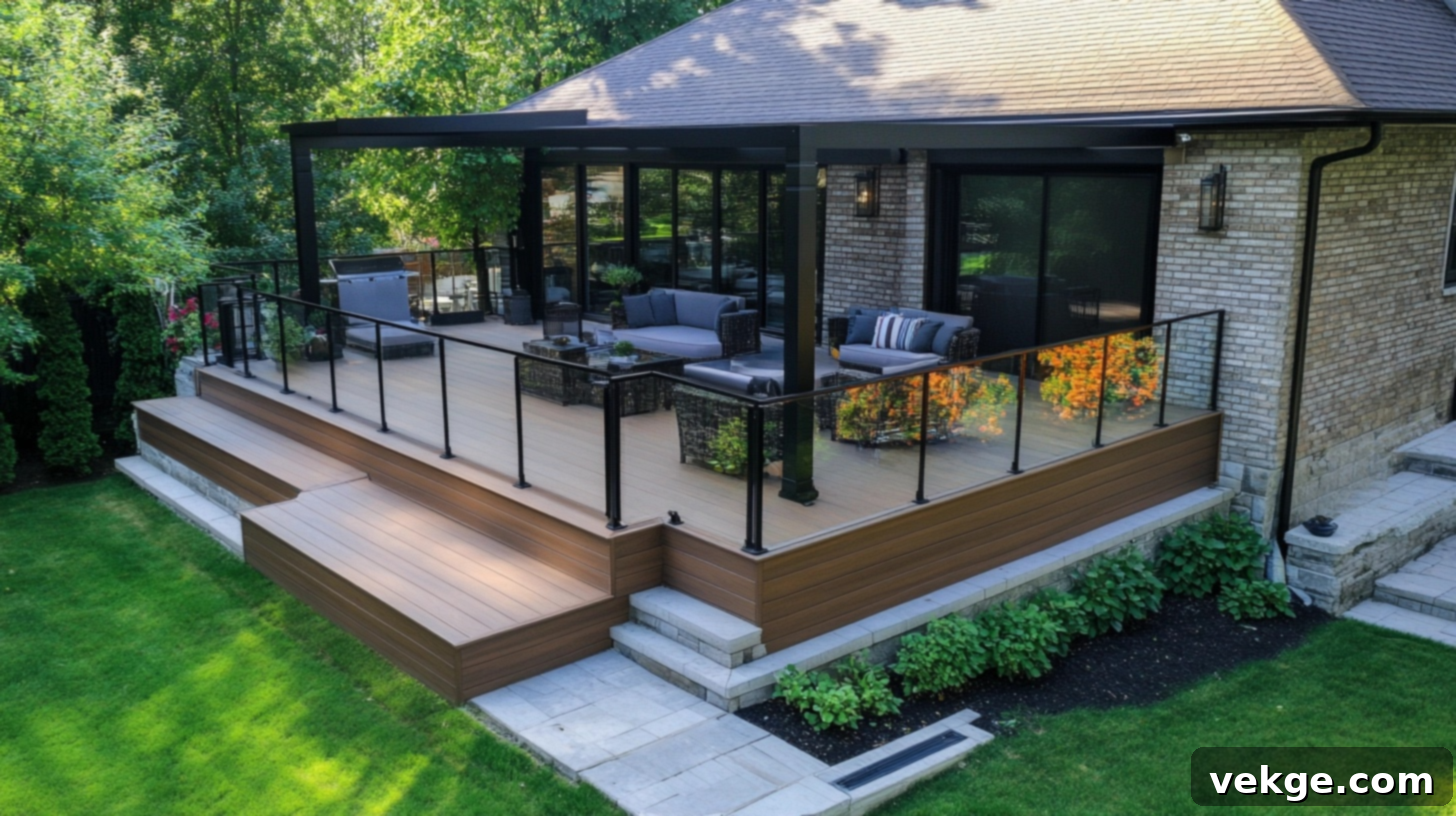
For an ultra-sophisticated and elegant outdoor space, combine a luxurious wooden deck with a glass-railed patio. This glamorous pairing maximizes breathtaking views and floods the area with natural light, creating an impressive sense of openness and expansive living. It’s perfect for properties with scenic vistas or for homeowners seeking a contemporary touch of luxury and architectural brilliance, ensuring safety without obstructing the beauty of the surroundings.
7. Urban Rooftop Deck and Patio Oasis
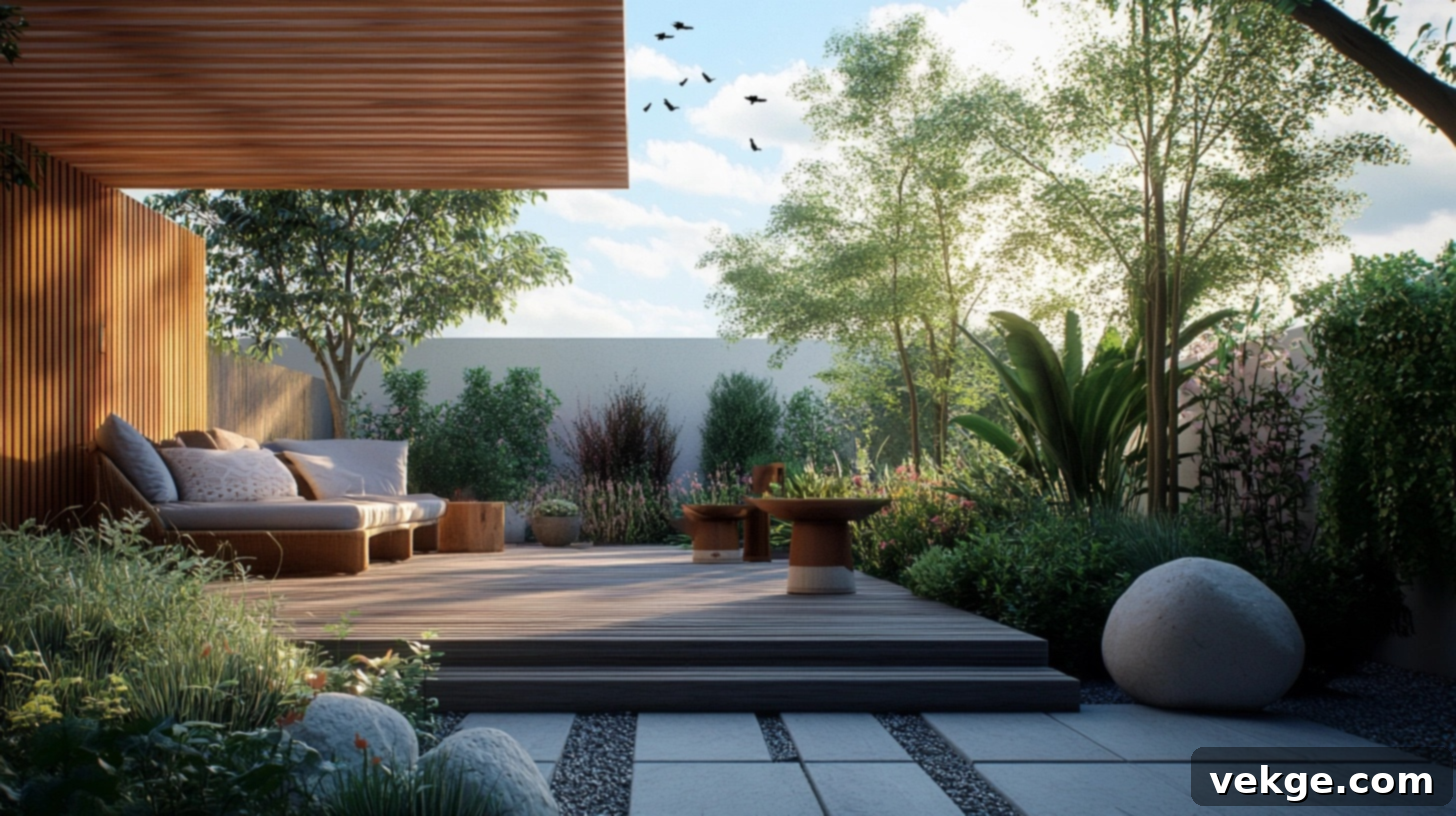
In a bustling modern city setting, transform an often-underutilized rooftop into a captivating urban oasis. Pair a sleek rooftop deck with a highly functional patio area to create a private retreat above the city streets. This space-maximizing design concept elevates limited urban real estate into a luxurious, private haven, often featuring clever container gardens, versatile modular furniture, and innovative privacy solutions to create an intimate escape.
8. Modern Farmhouse Style
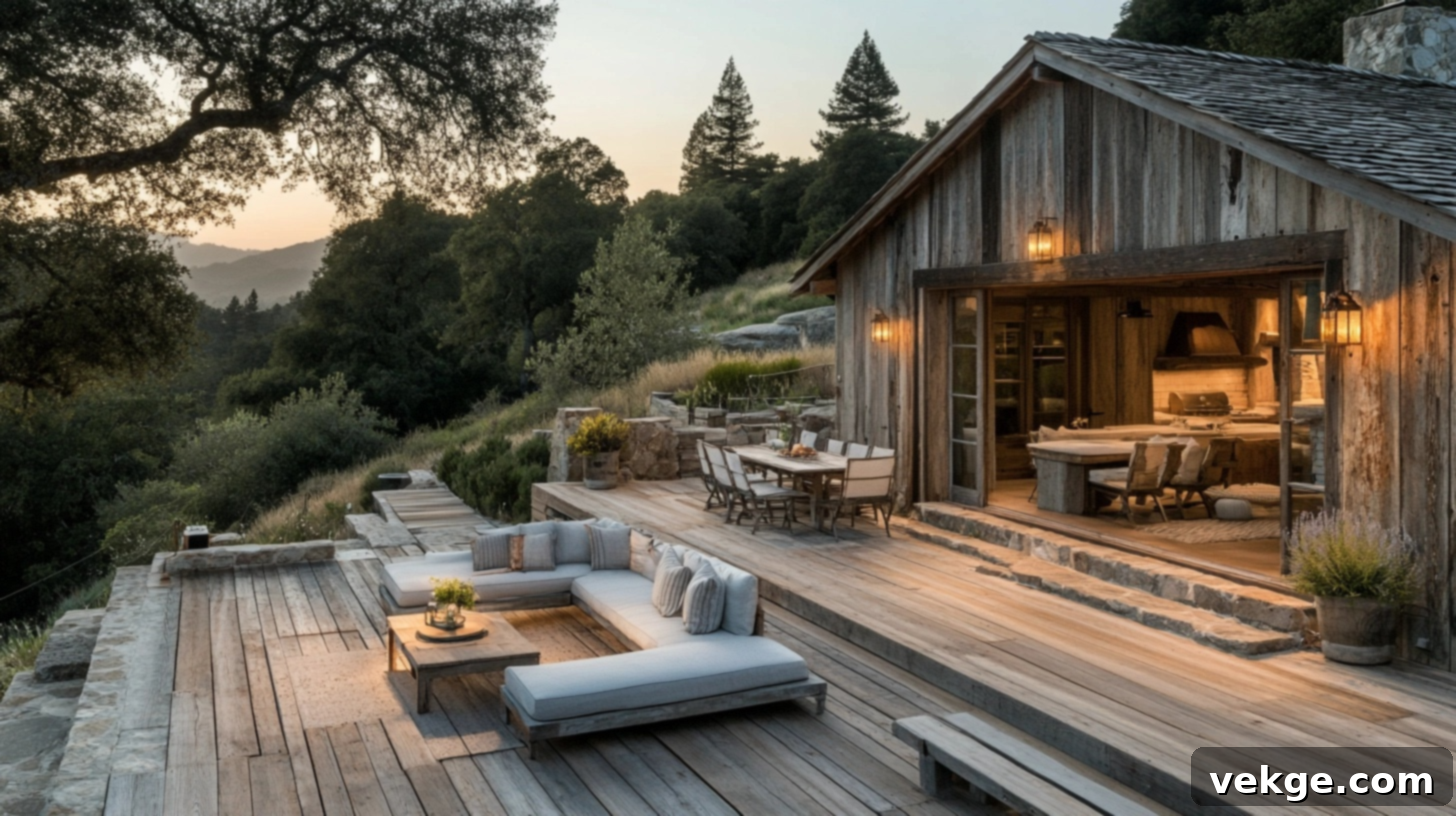
Achieve a charming blend of comfort and character with a modern farmhouse-style combo. Utilize reclaimed wood or distressed lumber for the deck and natural, weathered stone for the patio. Complement these elements with cozy, rustic-chic furniture, warm string lighting, and touches of greenery in galvanized planters to create an incredibly welcoming and laid-back atmosphere. This popular style effortlessly balances vintage elements with contemporary comforts, incorporating neutral colors and natural textures for a timeless outdoor living space.
9. Zen-Inspired Minimalist Retreat
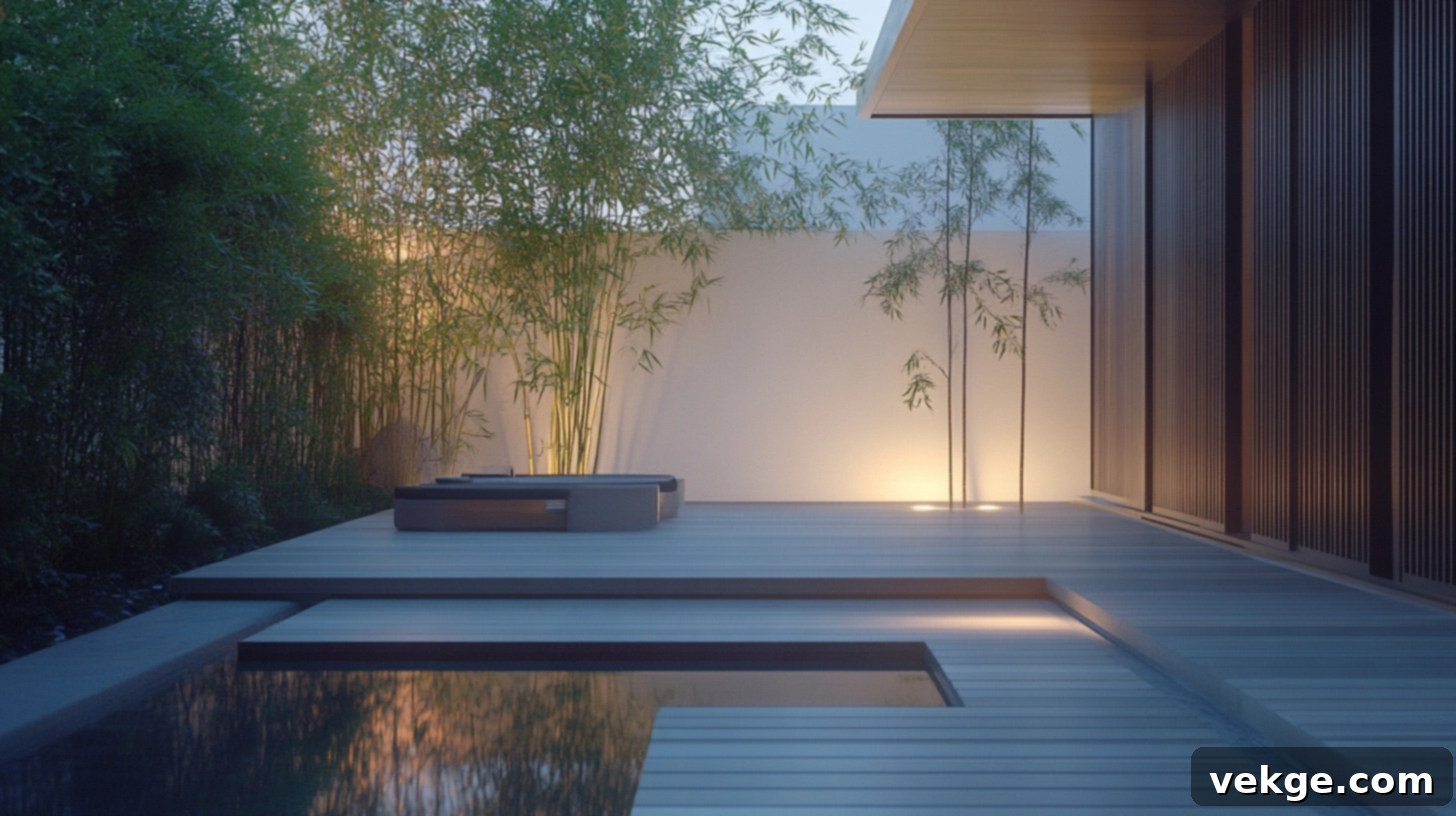
Cultivate a tranquil and serene outdoor sanctuary with a Zen-inspired minimalist approach. Design a low-profile wooden deck that seems to float above the landscape, connected to a smooth concrete or pebble patio. Introduce calming elements such as graceful bamboo plants, simple, clean-lined furniture, and soft, diffused lighting to create a truly serene retreat. This calming design emphasizes balance, harmony, and simplicity, utilizing natural elements, open spaces, and a subdued palette to foster a sense of peace and contemplation.
10. Cozy Fire Pit and Lounge Area

Extend your outdoor enjoyment into the cooler months and create a magnetic focal point for social gatherings by pairing a comfortable wooden deck with a stone patio that prominently features a built-in or freestanding fire pit. This combination creates an irresistibly warm and inviting environment, perfect for evening gatherings, storytelling, and s’mores under the stars. Surround the fire pit with comfortable, durable seating to encourage relaxation and conversation.
11. Sleek Outdoor Kitchen and Dining Area
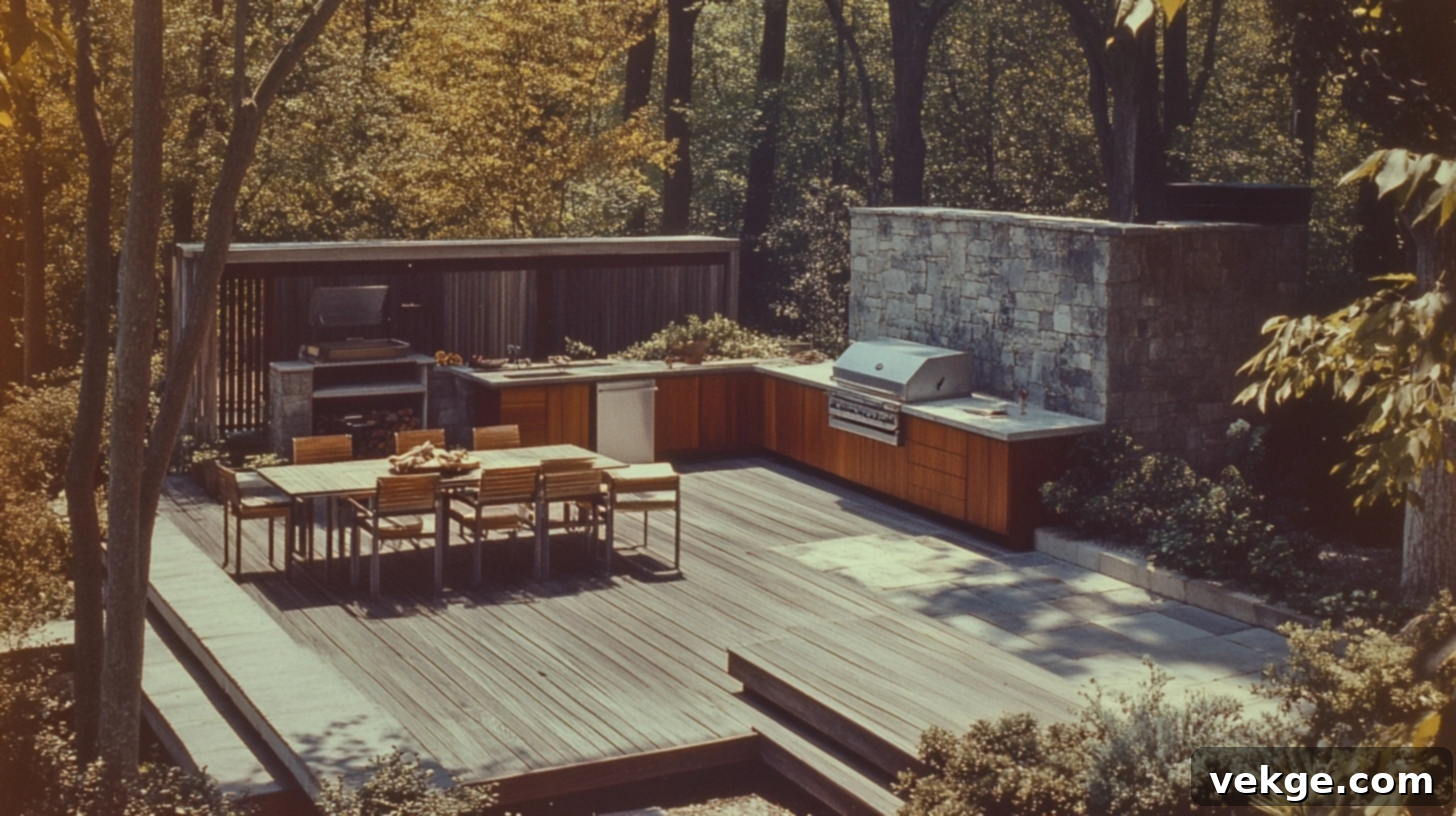
Elevate your entertaining game by combining a modern, well-appointed deck with a stone patio that seamlessly integrates built-in seating, a dedicated dining area, and a fully equipped outdoor kitchen. This comprehensive design transforms your backyard into the ultimate space for hosting, allowing you to cook, dine, and relax al fresco without ever needing to step inside your home. Think high-end appliances, durable countertops, and ample prep space for the ultimate culinary experience outdoors.
Step-by-Step Process to Build Your Dream Deck and Patio Combo
Building a modern deck and patio combo is a significant undertaking that requires careful planning, precise design, and meticulous execution. While rewarding, it’s crucial to approach it systematically. Follow these detailed steps to create a functional, stylish, and long-lasting outdoor space that you’ll cherish for years to come.
Step 1: Plan Your Layout and Design

Assess Your Space Thoroughly: Begin by carefully examining your yard’s topography, understanding its sun exposure patterns throughout the day, and identifying any existing views you wish to highlight or privacy concerns you need to address. Consider the natural terrain and how it might organically influence your layout. Take precise measurements of your entire backyard and note any potential obstacles, such as mature trees, existing utility lines, or property boundaries.
Determine Desired Functionality: Clearly define how you intend to use each specific area of your combo. Will the elevated deck primarily serve as a formal dining area, a quiet reading nook, or a sunbathing spot? Will the ground-level patio host a lively fire pit, a comfortable lounging zone, or an outdoor kitchen? Think about the natural traffic flow between these spaces and how they will seamlessly connect to your home’s existing entry points.
Create a Detailed Design Plan: Start by sketching your vision on paper, or utilize advanced 3D design software to visualize the combo from various angles. Your plan should meticulously include all dimensions, chosen materials, and integrate essential features like stairs, safety railings, built-in seating, or planters. For complex designs or if you’re unsure about structural integrity, consulting a professional architect, landscape designer, or deck builder is highly recommended. They can provide invaluable expertise and ensure your design is both beautiful and structurally sound.
Step 2: Choose Materials for Deck and Patio
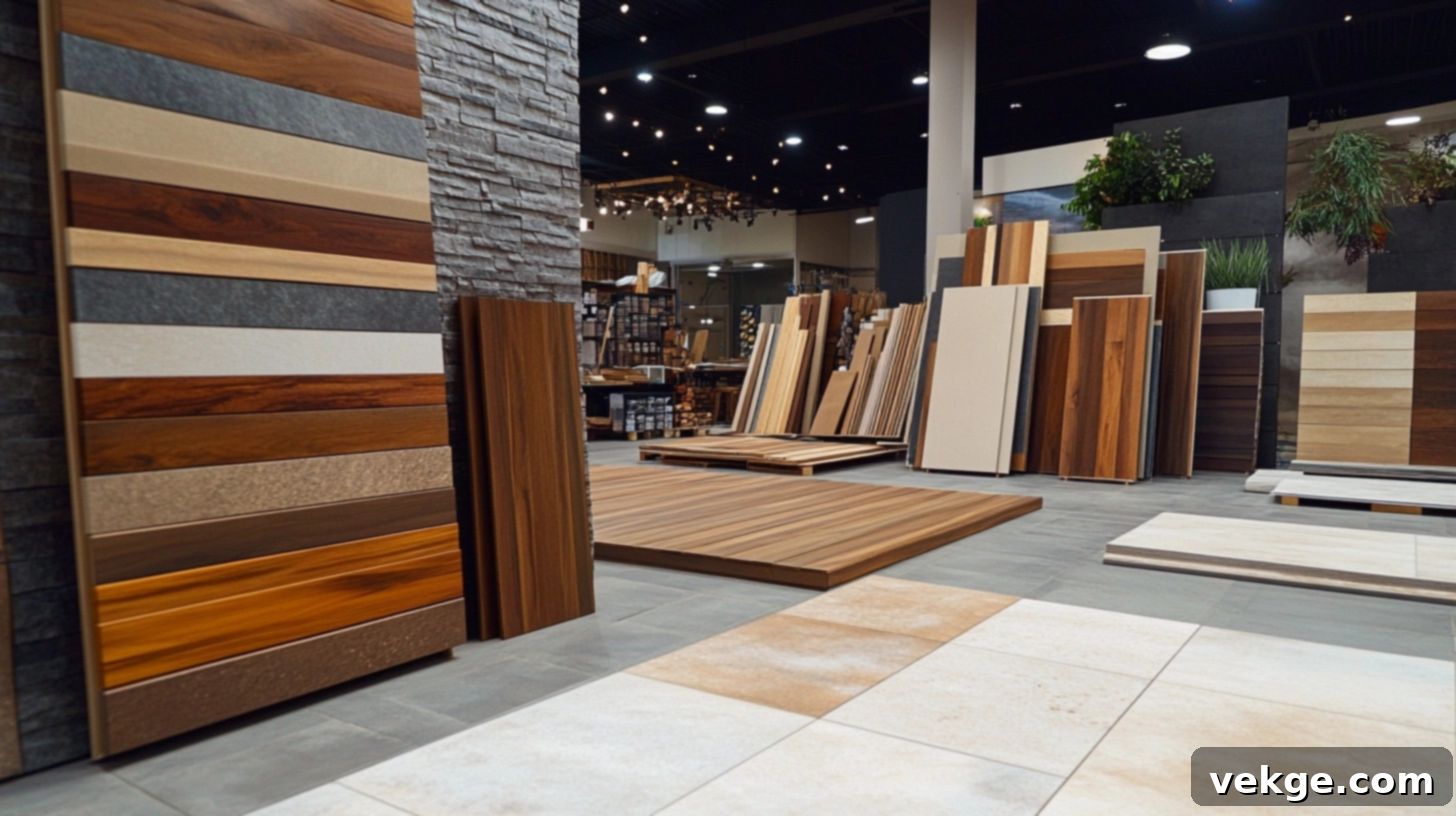
Your material choices will dictate the aesthetic, durability, and maintenance requirements of your combo. For the deck, you can choose from various options: pressure-treated lumber (cost-effective, good for structural components), natural woods like cedar or redwood (beautiful, naturally resistant to rot and insects, but require more regular maintenance), or low-maintenance alternatives such as composite or PVC decking (highly durable, rot-resistant, splinters-free, and available in a wide array of colors and textures). Consider factors such as initial cost, expected lifespan, required upkeep, and overall visual appeal when making your selection. Wood offers timeless natural beauty, while composites provide exceptional longevity with minimal annual maintenance.
For the patio, your options are equally diverse. These include poured concrete (versatile, can be stamped or stained for custom looks), interlocking concrete pavers (offer design flexibility, easy repair, and excellent drainage), natural stone such as bluestone or flagstone (premium look, highly durable, unique patterns), or traditional brick (classic, charming, and long-lasting). Each material has different installation requirements, varying costs, and distinct aesthetic qualities. Concrete is generally cost-effective and modern, while natural stone offers unparalleled beauty at a higher price point. Pavers often strike an excellent balance of looks, durability, and value.
Beyond the primary surfaces, think about complementary materials for railings, steps, edging, and transitions between spaces. Select materials that visually harmonize with each other and your home’s existing architecture while effectively meeting your practical requirements for safety and durability in your specific climate.
Step 3: Obtain Necessary Permits
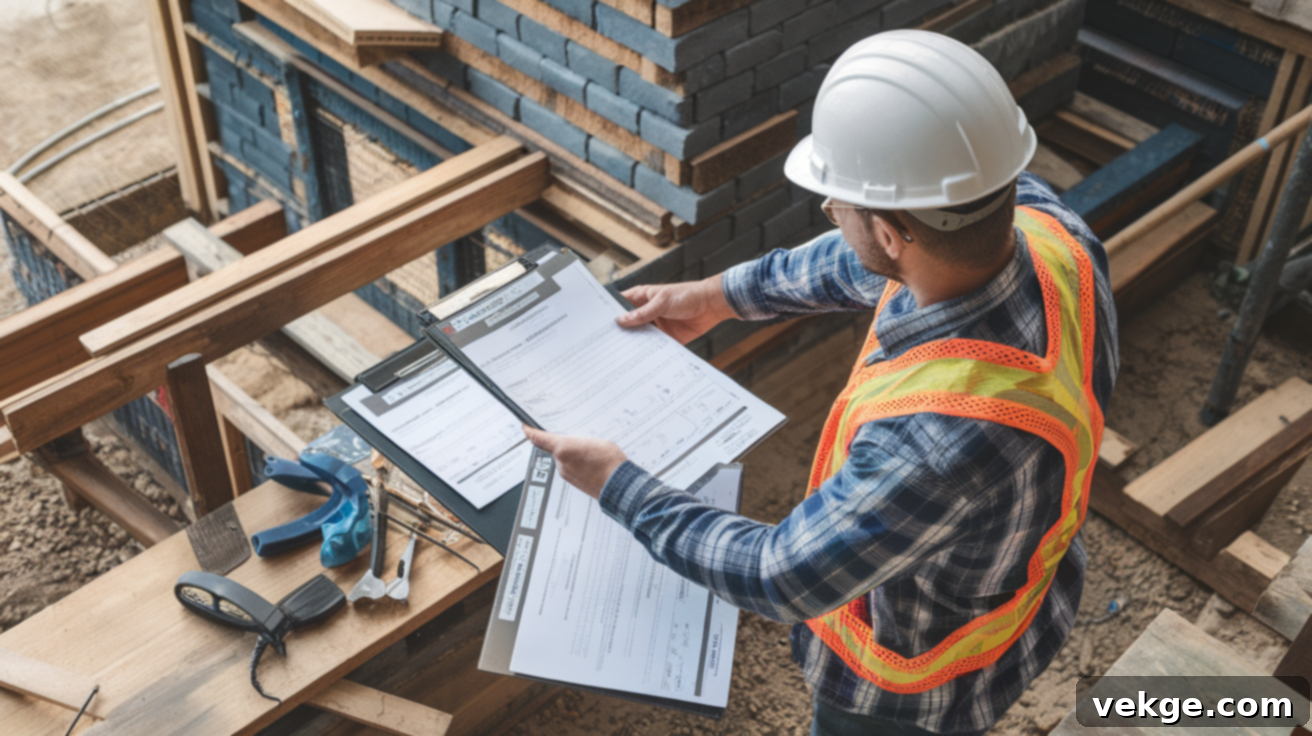
This is a critical step that should never be skipped. Before commencing any construction, thoroughly research your local building codes and any specific homeowner association (HOA) rules. Requirements vary significantly by location; many municipalities have stringent regulations concerning deck height, proximity to property lines, structural support requirements, guardrail specifications, and proper patio drainage solutions. Some areas may also have restrictions on the types of materials you can use or specific design elements.
Visit your local building department to inquire about and apply for all necessary permits. Be prepared to provide detailed construction plans that include precise dimensions, chosen materials, and proposed construction methods. You will likely need to pay filing fees, and be open to potentially revising your plans to ensure full compliance with all local code requirements. Failing to obtain the correct permits can lead to severe consequences, including hefty fines, mandatory removal or demolition of non-compliant structures, and significant complications when you eventually decide to sell your home. Prioritize this step to ensure your project is legal and safe.
Step 4: Prepare the Site

Thorough site preparation is the foundation for a successful and long-lasting deck and patio combo. Begin by meticulously clearing all vegetation, rocks, and any other debris from your marked construction zones. This means cutting and removing all grass, weeds, and plants, and relocating any existing features such as irrigation lines or landscape lighting. For larger obstructions, like stubborn tree stumps or significant boulders, specialized equipment or professional assistance may be necessary to ensure complete and effective removal.
Next, excavate the patio area to a sufficient depth that will accommodate all base materials—typically 6-8 inches, but this can vary depending on your local climate and soil conditions. Critically, ensure the excavation slopes slightly away from your home (approximately 1 inch of drop for every 4 feet of length) to guarantee proper water drainage and prevent water accumulation against your foundation. Remove all soft spots, organic material, and loose soil to create a consistently solid and stable base.
For the deck, accurately mark and dig holes for footings. These footings must extend below your area’s frost line to prevent shifting due to freeze-thaw cycles, a crucial step for structural stability. For the patio base, first lay down a layer of geotextile fabric; this helps prevent weed growth from below and stabilizes the base. Then, add and compact a substantial base layer of crushed stone or gravel, typically 4-6 inches thick. This compacted foundation work is absolutely critical for the long-term longevity, stability, and evenness of both your deck and patio structures.
Step 5: Build the Deck
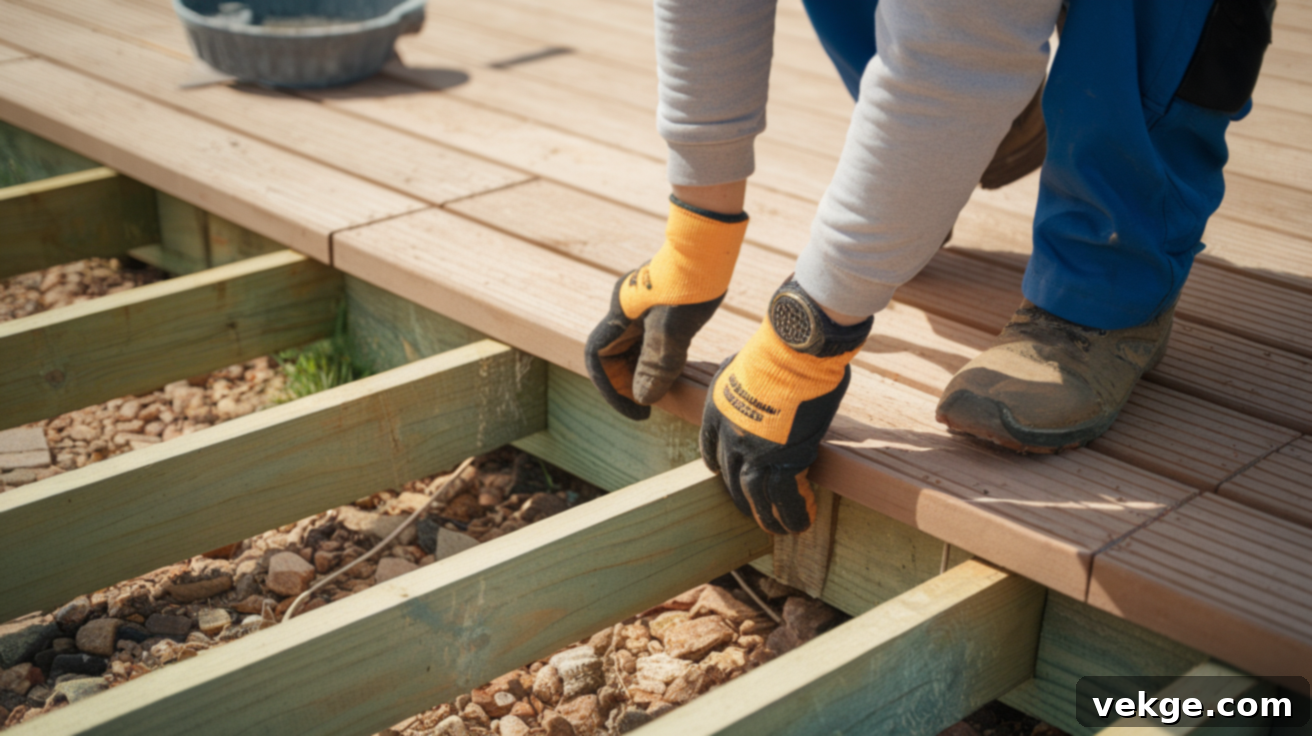
With the site prepared, construction begins with the deck. First, set your primary support posts securely in the concrete footings you’ve dug, ensuring they are perfectly plumb and level. Allow the concrete to cure fully according to manufacturer specifications before proceeding. Next, attach the ledger board directly to your house; this board must be perfectly level, securely bolted, and properly flashed to prevent water intrusion into your home’s structure. Install main beams across the tops of your posts, followed by joists spaced appropriately according to your chosen decking material’s guidelines (typically 16 inches on center). Ensure all framing is square and rigid.
Begin laying the decking boards perpendicular to the joists. It’s essential to leave appropriate gaps between boards (using spacers) for proper drainage and natural expansion/contraction of the material. Secure each board with the recommended fasteners (screws are generally preferred over nails for better holding power), ensuring rows remain straight and consistent with alignment tools. Once the main decking surface is complete, install essential safety features: railings that meet all local building codes for height and spacing, and sturdy stairs connecting the deck to the ground or patio below. Finally, add any built-in elements such as benches or planters, and install trim pieces to cover exposed framing, creating a polished and finished look.
Step 6: Build the Patio
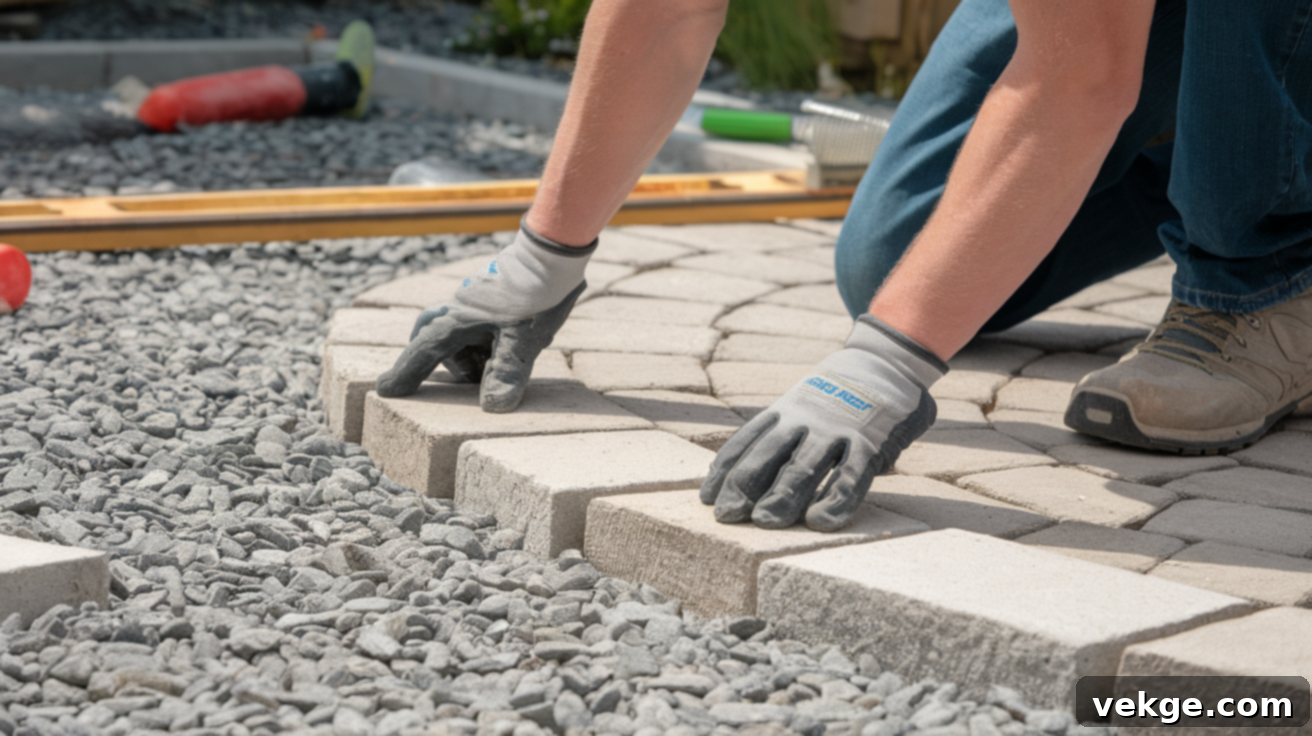
Once the deck structure is taking shape, shift focus to the patio. Start by thoroughly leveling and compacting the gravel base layer to create an incredibly stable foundation. This step is crucial for preventing future settling and unevenness. Next, add a uniform 1-inch layer of bedding sand over the compacted gravel. Use long, straight screed boards and guide rails to carefully screed this sand layer, ensuring it is perfectly flat and consistent. The smoothness and precision of this sand base directly determine the evenness and professional finish of your completed patio surface.
Begin laying your chosen pavers or stones from one corner, working outward in your desired pattern. Use a rubber mallet to gently tap each paver firmly into place, ensuring it settles securely into the sand bed. Frequently check the surface with a long level to confirm it remains consistently even and maintains the proper slight slope for efficient water drainage. Install robust edge restraints around the entire perimeter of the patio; these are essential for preventing the pavers from shifting or spreading over time, maintaining the patio’s integrity. Finally, meticulously fill the joints between pavers with polymeric sand. This specialized sand hardens when wet, effectively locking the pavers in place, deterring weed growth, and preventing insect infestation. Sweep away any excess sand and then lightly spray the entire surface with water to activate the binding agents in the polymeric sand, allowing it to cure and harden.
Step 7: Connect the Deck and Patio
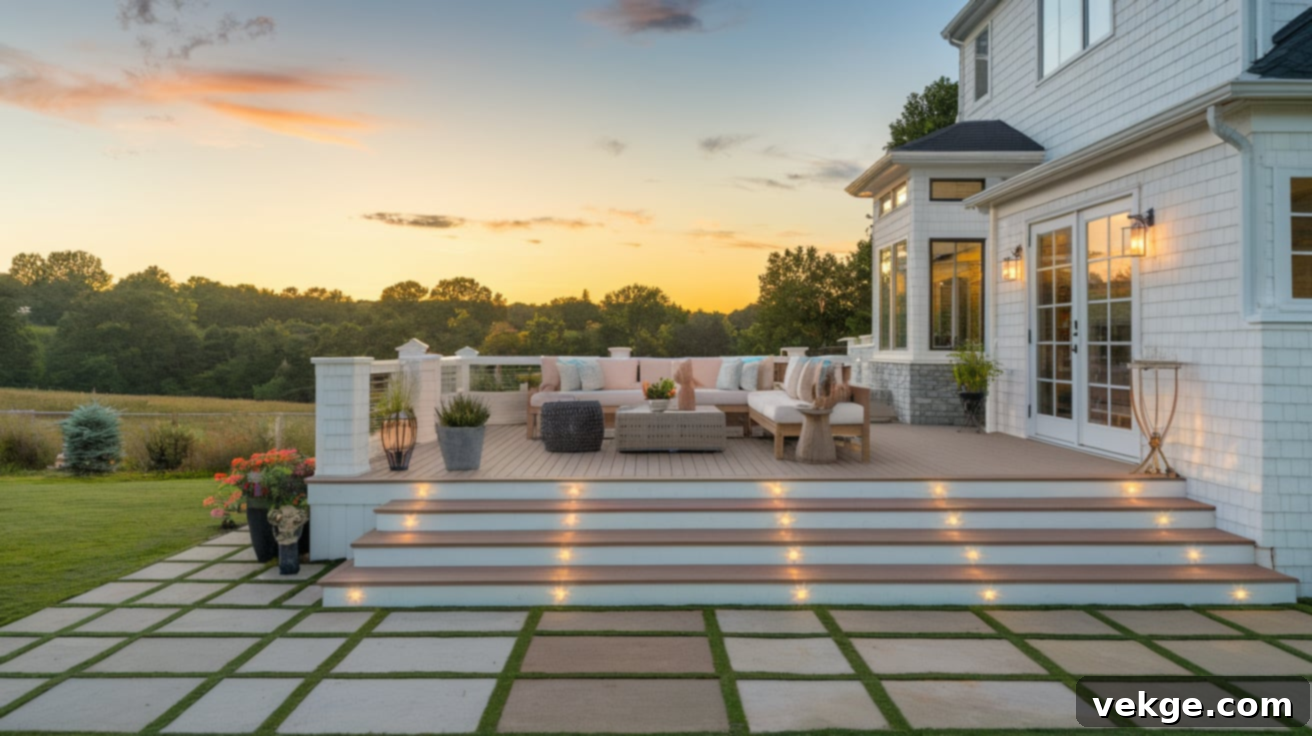
The transition between your elevated deck and ground-level patio is a crucial design element. Build steps or a short, inviting staircase to seamlessly connect these two distinct areas. For safety and comfort, ensure all steps are uniform in height (rise) and depth (tread). To create visual continuity and a cohesive design, match or carefully complement the materials used in both structures for the steps and any connecting pathways. If the deck and patio are not directly adjacent, install a well-designed walkway using coordinating pavers, stepping stones, or even a gravel path to link them. Design this path to follow natural traffic patterns and enhance the overall flow and functionality of your outdoor space. Consider adding subtle, low-level lighting along the route for improved safety and to create a magical nighttime ambiance, guiding guests between zones.
Step 8: Add Finishing Touches
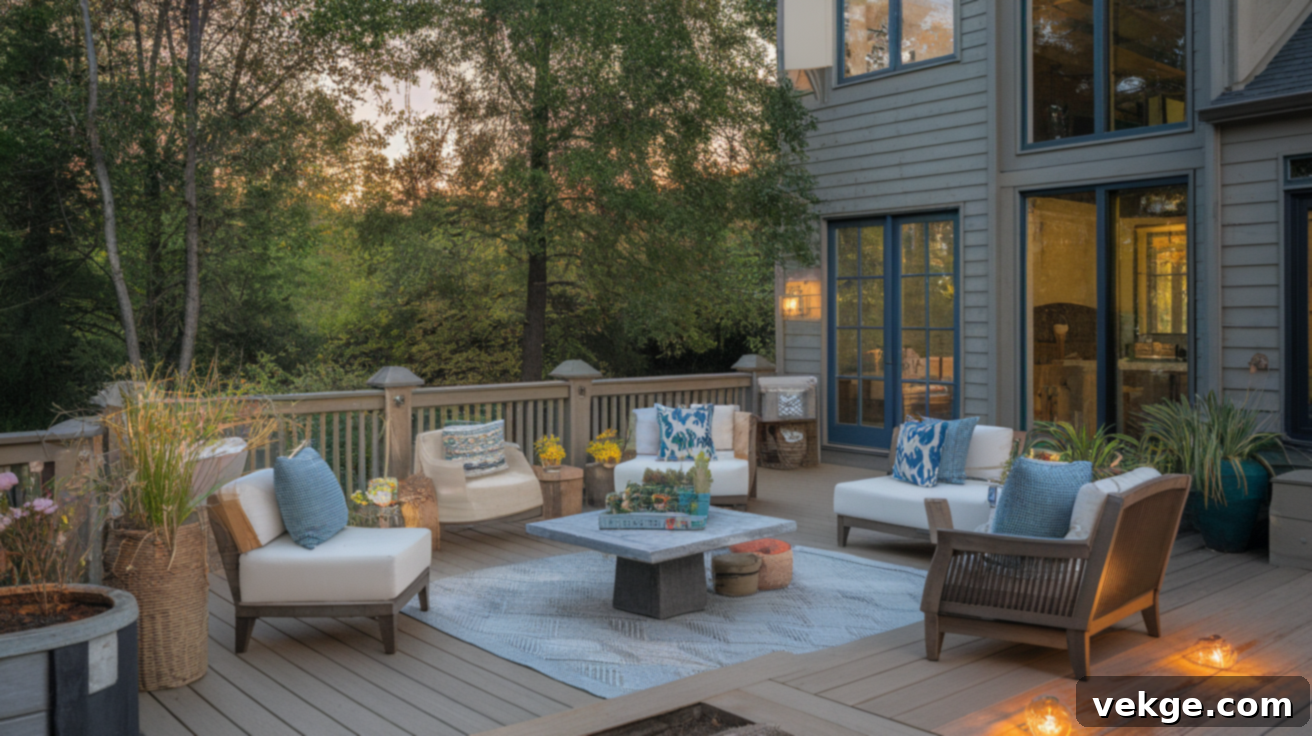
Once the main construction is complete, it’s time to bring your outdoor space to life with thoughtful finishing touches. Integrate outdoor-rated lighting to significantly enhance both safety and ambiance. This could include subtle step lights on the deck stairs for safe navigation, elegant path lighting between spaces, and ambient lighting options such as charming string lights, stylish lanterns, or recessed ceiling lights under covered sections. Consider solar-powered options for energy efficiency and ease of installation, or wired systems for consistent, reliable illumination.
Select weather-resistant outdoor furniture that not only suits the intended function of each area but also complements your overall design aesthetic. For dining areas, prioritize a durable table and comfortable chairs that can withstand the elements. For lounging zones, invest in plush, comfortable seating with quick-drying outdoor cushions for added comfort and style. Choose pieces that are practical for outdoor use yet align perfectly with your chosen design style, from modern minimalist to rustic farmhouse.
Finally, introduce plants in attractive containers on the deck and strategically around the patio perimeter. This helps to soften hard edges, add vibrant color and texture, and create a more natural, inviting feel. Select varieties that are well-suited to your local climate, the specific light conditions of each area (sun or shade), and your maintenance preferences. Consider built-in planters within the deck or patio structure, or strategically placed large pots, to effectively define different functional zones and add a lush, living element to your newly created outdoor oasis.
Maintaining Your Deck and Patio Combo for Lasting Beauty
To ensure your magnificent outdoor space remains in pristine condition and continues to provide enjoyment for many years, proper and consistent maintenance is essential for both your deck and patio. Regular upkeep not only preserves the aesthetic appearance of your significant investment but also extends its structural lifespan, ensuring you can fully enjoy your beautiful outdoor living area season after season.
- Regular Cleaning Rituals: Make it a habit to sweep away leaves, dirt, and debris weekly to prevent buildup. Perform a more thorough wash of all surfaces monthly, using appropriate, gentle cleaners specifically designed for your deck’s material (wood, composite) and your patio’s material (stone, concrete, pavers).
- Seasonal Structural Inspections: Each spring, conduct a comprehensive inspection of both structures. Check the deck for any loose boards, protruding nails, or screws, and signs of wood rot or insect damage. Examine the patio for shifted pavers, cracked stones, or issues with the polymeric sand.
- Protective Sealing and Staining: For wooden decking, apply a high-quality sealant or stain every 1-2 years, or as recommended by the manufacturer, to protect against UV damage, moisture, and mildew. Reseal stone or concrete patios as advised, typically every 2-5 years, to maintain their integrity and appearance.
- Vigilant Weed Prevention: Promptly remove any weeds that sprout from patio joints or around the deck. Reapply polymeric sand to patio joints as needed to maintain its weed-blocking properties, or consider installing a professional-grade weed barrier during initial construction.
- Outdoor Furniture Care: Regularly clean your outdoor furniture according to its material. During harsh weather periods (heavy rain, snow, strong sun), cover your furniture or store it indoors to protect it from damage and extend its lifespan.
- Drainage System Maintenance: Periodically check and clear all drainage channels, gutters, and downspouts connected to your deck and patio. Ensure that water continues to flow freely and effectively away from both structures and your home’s foundation.
- Winter Protection (where applicable): In areas with snow and ice, remove snow carefully from your deck and patio using plastic shovels to avoid scratching or damaging the surfaces. Avoid using harsh de-icing salts on certain materials, as they can cause erosion or discoloration.
- UV Protection for Decking: If your wooden deck is exposed to direct sunlight for long periods, consider applying UV-resistant treatments or stains to prevent fading, graying, and material degradation over time.
- Prompt Repair of Issues: Address small issues as soon as they are noticed. A loose board, a chipped paver, or a small patch of rot can quickly escalate into larger, more costly problems if neglected. Timely repairs save money and preserve safety.
Conclusion: Your Enhanced Outdoor Oasis Awaits
Creating a deck and patio combo truly offers the best of both outdoor worlds—an elevated, inviting space perfect for dining al fresco, soaking up the sun, or enjoying elevated views, seamlessly connected to a ground-level area ideal for comfortable lounging, lively gatherings around a fire pit, or even a full outdoor kitchen. By thoughtfully selecting complementary materials, meticulously planning distinct functional zones, and diligently following proper building techniques, you are well on your way to designing an unparalleled outdoor space that serves multiple purposes while significantly enhancing your home’s aesthetic appeal and market value.
Remember, your investment in this beautiful outdoor extension will be protected and its charm maintained with consistent, regular maintenance. Whether your personal style leans towards clean modern lines, rustic warmth, a vibrant bohemian feel, or anything in between, a well-designed and properly maintained deck and patio combination will undoubtedly upgrade your backyard into an irresistibly welcoming retreat for relaxation, entertainment, and making cherished memories for many years to come. Start planning your dream outdoor oasis today!
